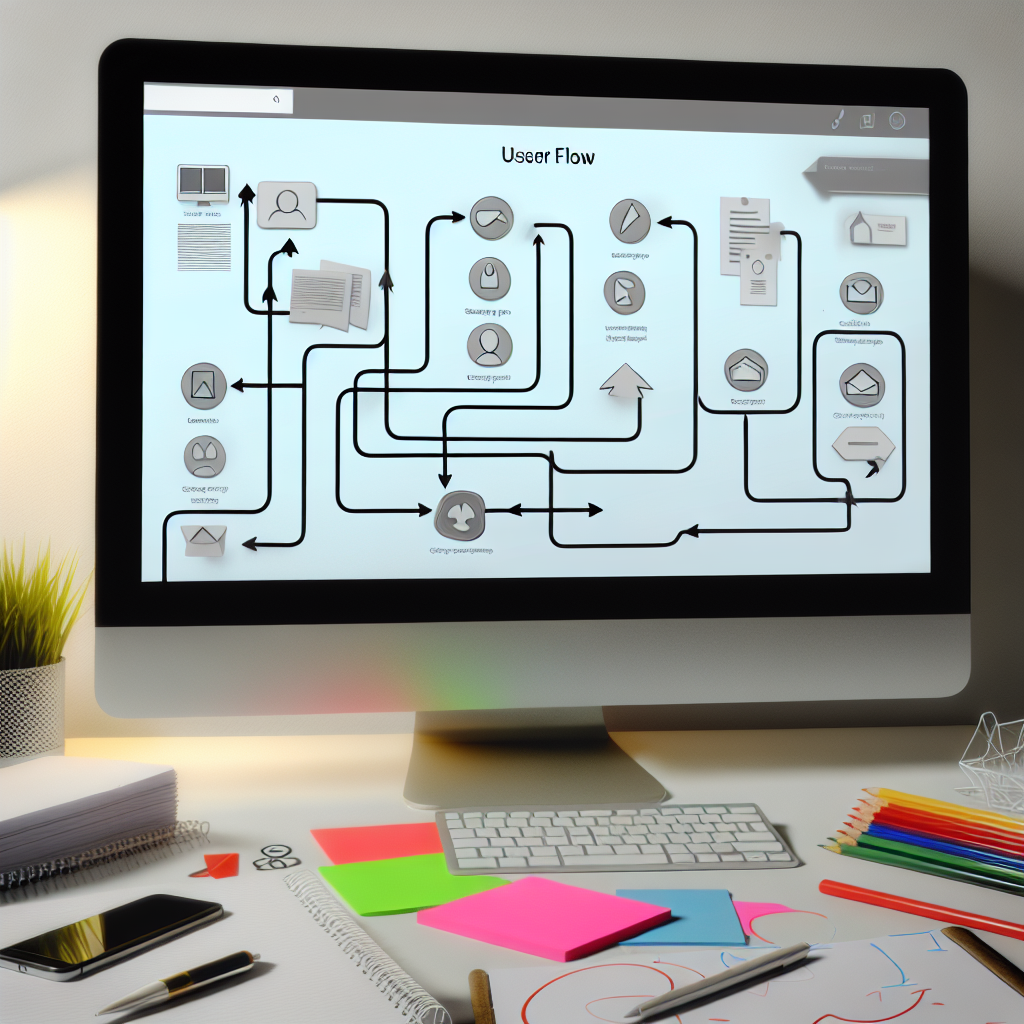User flow diagrams are essential tools in UX design, offering a comprehensive overview of user interaction with a website or application.
What Are User Flow Diagrams?
User flow diagrams, also known as user journey maps, depict the path users take to achieve a goal on a website or application. These diagrams illustrate the steps users must follow, from the landing page to completing a purchase or signing up for a service. By visualizing these paths, designers can identify potential pain points and streamline the user experience.
Key Benefits of User Flow Diagrams
Clarity and Understanding: User flow diagrams provide clarity by breaking down the user’s journey into manageable steps. They help stakeholders and team members understand how users interact with the system and identify areas needing improvement.
Identify Bottlenecks: By mapping out each step, designers can spot any bottlenecks where users might get stuck or abandon the process. This proactive approach allows for timely adjustments, enhancing user satisfaction.
Enhanced Collaboration: These diagrams are valuable communication tools that bridge the gap between designers, developers, and stakeholders. They ensure everyone is on the same page regarding user expectations and design goals.
Creating Effective User Flow Diagrams
Start with User Goals: Begin by clearly defining what goals users need to achieve. Whether it’s making a purchase, finding information, or signing up for a newsletter, understanding these goals is essential.
Detail Steps Clearly: Break down the process into clear, actionable steps. Use simple language and avoid jargon to ensure every team member can understand the flow.
Utilize Visual Aids: Enhancing your diagrams with visuals, such as icons and color coding, can make them easier to digest. Visual aids highlight important steps and make the diagrams more engaging.
Best Practices in User Flow Diagram Design
Keep It Simple: Avoid unnecessary complexity in your diagrams. The goal is to create a clear and straightforward path that reflects the user’s journey without overloading it with details.
Include Decision Points: Make sure to incorporate decision points where users might choose different paths. This ensures a comprehensive map that covers all potential user interactions.
Regular Updates: User flow diagrams should evolve with your website or application. Regularly update them to reflect any changes in the design or user behavior patterns.
FAQs
Why Are User Flow Diagrams Important in UX Design?
User flow diagrams are crucial because they provide a visual representation of the user’s journey. They help identify potential pain points, streamline the design process, and ensure a better user experience by addressing issues before they become problems.
How Do User Flow Diagrams Improve Collaboration?
These diagrams serve as a universal language for the team, ensuring everyone understands the user’s journey. They promote collaboration by clearly communicating design decisions, user expectations, and project goals to stakeholders and team members alike.
What Tools Can I Use to Create User Flow Diagrams?
There are several tools available for creating user flow diagrams, such as Sketch, Figma, Adobe XD, and Lucidchart. These tools offer various templates and features that make it easier to design and share user flow diagrams.
How Often Should User Flow Diagrams Be Updated?
User flow diagrams should be updated regularly to reflect any changes in the design or new user data. Regular updates ensure the diagrams remain relevant and accurate, helping the team make informed decisions and improve user experience continually.





